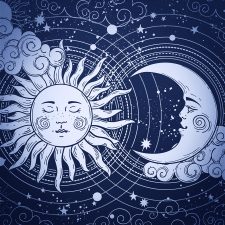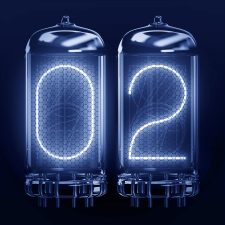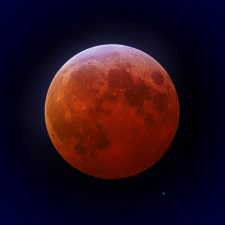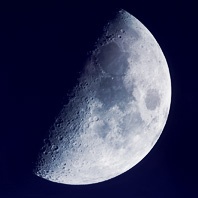The words “full moon” in many languages

It is said that there are more than 6,000 languages worldwide (this is hard to imagine) and it is a fascinating concept to think, there are probably as many words for “full moon”.
Here we begin our little journey to the full moon. A few words about the fascinating quest of the greater purpose, that includes the full moon circulating through our lives. In layman’s terms and not always scientific (astronomy experts – don’t look too closely!). We would like to wish you illuminating moments. Enjoy!


It is said that there are more than 6,000 languages worldwide (this is hard to imagine) and it is a fascinating concept to think, there are probably as many words for “full moon”.

A full moon is when the Sun and the Moon are facing opposite, being in opposite direction from an Earth perspective.
This might feel astonishing if one imagines that the Moon is on one side, the Sun on the other and the Earth in between? Shouldn’t the Earth throw a shadow onto the Moon? Bingo – this is exactly what she does! But only when the Moon is exactly on the Earth orbit, the so called “ecliptic”. When this takes place, we speak of a lunar eclipse!

The Moon needs 27.33 days to circle around the Earth. Something that is also referred to as “sidereal time”. But because the Earth orbits the Sun, just like the Moon orbits the Earth, the Moon has to travel two further days in order to resume the same position to the Earth and Sun. This is then called the “sidereal time”. In order to determine the point of time of the reoccurring full moon, the sidereal time serves as basis.

We already know now that the moon month is mostly shorter than the calendar month, being on average approximately 29.5 days. If full moon falls on the first or second of a month, it is possible that another full moon occurs in the same month, for instance in July 2004:
Friday, 2 July 2004, 01:08:54 pm
Saturday, 31 July 2004, 08:05:06 pm
This event is also known as “blue moon”.

The answer is: “everywhere at the same time”. This refers to the so called Universal Time (UT) though, which is used for general astronomical events. We have already learnt that full moon is an astronomical event, where the moon, sun and the earth play a role by being in a specific position. So, full moon takes place at a specific time in the outer space. This point of time is specified by astronomers namely by the Universal Time.

There are multiple ways of approaching this question. If we look at it from a purely theoretical standpoint, we might be tempted to say that the full moon is infinitely short, since the phases of the moon are changing continuously. The moon is not yet quite full shortly before the full moon, and is already waning shortly afterwards.
However, there is a practical aspect that lets us quantify the full moon as a finite and measurable span of time: Since the Sun is significantly bigger than the Moon, its rays are able to reach just a little over half of the Moon’s surface. This means that the timespan in which the visible side of the Moon’s surface is irradiated (as seen from Earth) is longer than infinitely short.

Whether scientists, astrologers or esoterics, they agree on one thing: the moon influences earth and life on earth. For instance, it regulates the tides through its magnetism. Also continents feel the consequence of this magnetism and either raise or lower their position sometimes up to 26 cm.

In nature it is a known fact: for some animal species, mating takes place at full moon. However, the examples that can be found on this subject are rather simple. Full moon serves in some cases indirectly as the cause (for instance through the high water levels during the tides that the horseshoe crab uses to deposit its eggs) or also as the signal for both sexes of a species to begin at the exact same time to safeguard their future existence (a particular type of fly or also corals). It is understood that also wolves are led by full moon when it is time to mate.

… that people are looking for an argument at full moon or are especially happy …
… that if full moon is surrounded by a haze, a person dies …
… that you raise your hat three times to the moon (being a man) or you make a curtsey (being a woman), in order to protect yourself from misfortune until the next full moon …
… that whoever does not chink glasses with full moon at least once, does not deserve any happiness [Greek toast] …

During a lunar eclipse, the Moon moves through the shadow of the Earth. Which means, that the Earth is positioned quite exactly between the Sun and Moon and casts its shadow onto the Moon. This is only possible at full moon and if some other requirements are met. Depending on whether the moon passes the partial or the core shadow of the Earth, we speak of a partial or total lunar eclipse.

Matching to the moon festival, which has just been celebrated in Asia, we are looking to the Far East and are going far back in time to the year 700 A.D. Back then, the Tang Dynasty ruled China, a powerful dynasty that remained in power for almost 300 years. And there were two poets whose names are still well-known today, Li Bai (701–762) and Du Fu (712–770; see fictitious portrait opposite). Both created magnificent works. Li Bai was already a little older and hence a few years ahead, Du Fu had apparently surpassed his idol – this is what is being said amongst scholars.

There is a German poem called »Dunkel war’s, der Mond schien helle«, in which the first line has been dedicated to the Moon and which boasts special features. For one thing, nobody knows who wrote the poem, which is quite unusual coming from the »land of poets and thinkers«. For another thing, it is based on the principle of the »oxymoron«. This is a figure of speech that juxtaposes elements that are contradictory or that are created from terms which are mutually exclusive. Straight away, the first line reveals this principle, because it cannot be »dark«, when the Moon is shining »bright«.

When Neil Armstrong became the first human being that set foot on the moon within the scope of the Apollo 11 mission in 1969, he said the famous words »That’s one small step for (a) man … one … giant leap for mankind« and hence erected a monument for this historic move. Rarely in history, did the success of human research and development work, condense so impressively in just one moment.

Towards the end of the 18th century, over 200 years ago, Germany was about to be conquered by a new style of painting: the romanticism. The objective was, just as we understand it today, to emphasise feelings. But it was much more than this …
It was about the self-conception of an entire generation of artists, poets and musicians, who were trying to oppose the, up until then, reigning reason of the enlightenment era and also the classicism that was concerned with order. They countered with irrational contents i.e. fantasy, infinity or transcendency. It was what Wassily Kandinsky (1866–1944) expressed about the artist in general at a much later point in time: “The fortune of an artist is the possibility, to express longing in forms.”
The American-British space thriller »Gravity« of 2013, offers next to its extraordinary suspenseful action, breathtaking images of space that show apart from the Earth and the Sun also the Moon. The director of the movie is Alfonso Cuarón (who also directed Harry Potter and the Prisoner of Azkaban). The movie is commercially very successful and has already brought in the multiple of its production cost, shortly after its release.

No, this is not about another sequel of the science fiction movie or whether Arnold Schwarzengger is planning a trip to the moon … It is more about an astronomical term, where »terminator« describes the day-night border of a celestial body. This is the visible border between the illuminated side and the dark side of the object, being the border between day and night on the celestial body. The word »terminator« derives from Latin »terminare« = conclude, restrict.

When inviscid lava flows out of the volcano, it is possible that cavities are created inside the conduits, due to the different speeds of flow and temperatures. It is like a roof being formed above the flow of lava, which continues to flow inside. After cooling of the rocks, tubular cavities remain.
This phenomenon exists on Earth when volcanoes erupt, and scientists assume that those tubes and cavities could also be prevalent on the Moon, dating from a time when vulcanoes were still active there. The lesser gravity benefited the formation of the tubes and might have also contributed to the fact that there could be kilometer-sized cavities underneath the Moon’s surface.

The Moon circles the Earth. But indeed, it is no circle, but an ellipse, which portrays itself in space like a kind of spiral, because the Earth, together with the Moon, circles the Sun. And thus, the distance between the Earth and the Moon does not remain the same, but continuously changes. The distance varies between approx. 357,000 km/222,000 mi (called perigee) to approx. 406,000 km/252,000 mi (called apogee).

We have already reported about the subject »Sleeping at the full moon« with the insight that the phenomenon of a restless or bad sleep around the full moon apparently exists for many people, however, we are groping in the dark if looking at the background. Generally, sceptics claim that the insufficient sleep is connected to the fact that the people concerned are more or less aware of it being full moon and therefore eventuate a self-fulfilled prophecy. Those affected, counter that they often find out afterwards whether it was the full moon or it had not occurred to them yet to make this connection at all.

Luna 2 was a Soviet space probe that impacted the Moon on 13th/14th September 1959. Space probes are unmanned flying objects that are used for exploration. In this case, it was about exploring the Moon, with the goal to fly a human to the Moon and have them return safely. History shows that this did not become possible until ten years later, with the moon landing of Neil Armstrong within the framework of the Apollo 11 mission, in July 1969.